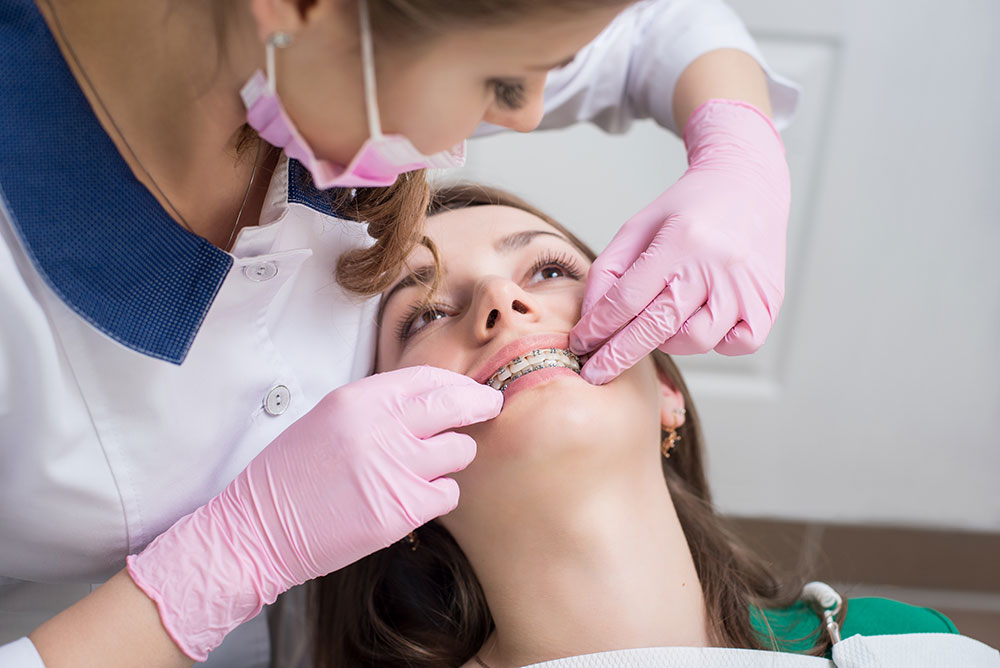The Of Legacy Orthodontics
The Of Legacy Orthodontics
Blog Article
6 Simple Techniques For Legacy Orthodontics
Table of ContentsThe Facts About Legacy Orthodontics UncoveredThe Greatest Guide To Legacy OrthodonticsEverything about Legacy OrthodonticsAll About Legacy OrthodonticsLegacy Orthodontics Things To Know Before You Get This
In addition, we use flexible therapy schedules, versatile payment choices and a fun, pleasurable experience.An orthodontist is a dental expert trained to identify, protect against, and deal with teeth and jaw abnormalities. Orthodontists function with people of all ages, from kids to adults.
Malocclusion, or misaligned teeth, can bring about oral issues, including tooth decay, periodontal condition, and challenging or unpleasant chewing. But not everybody is born with straight teeth. If you have a poor bite or large rooms between your teeth, you may intend to get in touch with a dental professional concentrating on orthodontic treatment.
How Legacy Orthodontics can Save You Time, Stress, and Money.
( Image Credit Rating: DigitalVision/Getty Images) Orthodontists make use of repaired and removable dental gadgets, like braces, retainers, and bands, to alter the position of teeth in your mouth. Orthodontic therapy is for dental abnormalities, consisting of: Misaligned teethBite problems, like an overbite or an underbiteCrowded teeth or teeth that are too far apartJaw misalignmentThe objective of orthodontic therapy is to boost your bite.
A healthy bite guarantees you can eat, chew, and talk effectively. While you could think about orthodontists as mainly for children or teens who need dental braces, they can fix oral problems at any type of age. Orthodontists attend college, oral school, and orthodontic college. After graduation, they spend 2 or 3 years in an orthodontic residency program.
All orthodontists are dental experts, yet not all dental experts are orthodontists. Orthodontic residency programs use intensive, concentrated guideline for oral experts. They concentrate on 2 areas: Exactly how to properly and safely move teeth Exactly how to appropriately assist development in the teeth, jaw, and faceOnce an orthodontist has actually finished training, they have the choice to end up being board licensed.
The Ultimate Guide To Legacy Orthodontics
Imbalance, or malocclusion, is one of the most common factor individuals see an orthodontist. It is genetic and is the outcome of dimension differences in between the top and lower jaw or in between the jaw and teeth. Malocclusion causes tooth overcrowding, an askew jaw, or irregular bite patterns. Malocclusion is usually treated with: Your orthodontist connects metal, ceramic, or plastic square bonds to your teeth.
If you have only small malocclusion, you may have the ability to use clear braces, called aligners, rather of conventional braces (https://guides.co/g/legacy-orthodontics?ajs_event=Referred). Some people require a headwear to assist relocate teeth into line with pressure from outside the mouth. After braces or aligners, you'll require to use a retainer. A retainer is a custom-made tool that maintains your teeth in position.
They're usually made use of on kids. They can create additional room in the mouth without having to draw teeth. If you have a significant underbite or overbite, you might need orthognathic surgical treatment (additionally called orthodontic surgical treatment) to extend or shorten your jaw. Orthodontists utilize cords, useful site surgical screws, or plates to sustain your jaw bone.
You might need to see an orthodontist if you have: Crowding or otherwise enough space for every one of your teethOverbite, when your upper teeth come over your bottom teethUnderbite, when your bottom teeth are too much forwardSpacing or concerns with gapsCrossbite, which is when your upper teeth fit behind your bottom teeth when your mouth is closedOpen bite or a vertical gap between your front bottom and upper teethMisplaced midline, when the facility of your base and upper teeth do not line up Remedying a dental malocclusion can: Make attacking, eating, and speaking easierImprove the symmetry of our face and your overall appearanceEase discomfort from temporomandibular joint disordersDifferent your teeth and make them less complicated to clean, helping prevent dental caries or cavities It's typically a dental practitioner who first notifications misaligned teeth throughout a routine test.
Get This Report about Legacy Orthodontics

Throughout your very first orthodontic consultation, you'll likely have: An oral examPhotos taken of your face and smileDental X-raysPanoramic (360 degree) X-rays of your face and headImpressions to develop molds of your teethThese examinations will assist your orthodontist understand exactly how to continue with your treatment. orthodontist. An orthodontist is a dental expert who's had training to treat your teeth and jaw
Orthodontists might perform surgical procedure, exams,X-rays,and more to help you achieve a more comfortable, much healthier smile. An orthodontist is concentrated on your bite, so something like a broken tooth would be dealt with by a dental professional. Orthodontists are dental professionals however not all dentists are orthodontists. Orthodontists are concentrated on your bite, or the method your teeth meshed, and the straightness of your teeth.
Ever asked yourself exactly how stars always appear to have completely aligned teeth? The response often depends on the proficient hands of an orthodontist. What exactly does an orthodontist do? Orthodontists are oral experts that focus on correcting abnormalities in the teeth and jaws. Their know-how goes past just producing a beautiful smile; it reaches boosting your total oral health and wellness and feature.
Legacy Orthodontics Fundamentals Explained

While braces are the most typically recognized orthodontic therapy, orthodontists have a diverse toolkit at their disposal. The details technique selected depends on the seriousness of the case, the person's age, and specific preferences. These tried-and-true braces utilize a system of braces bound to the teeth and linked by cables.
Clear aligners, like Invisalign, are a preferred choice for clients looking for a more discreet treatment option. These removable trays are custom-made to considerably shift the teeth's setting. Headgear may be used along with braces or aligners to apply added targeted pressures, specifically for dealing with jaw discrepancies. In cases of narrow jaws, palatal expanders can be used to create space for correct tooth positioning.
Report this page